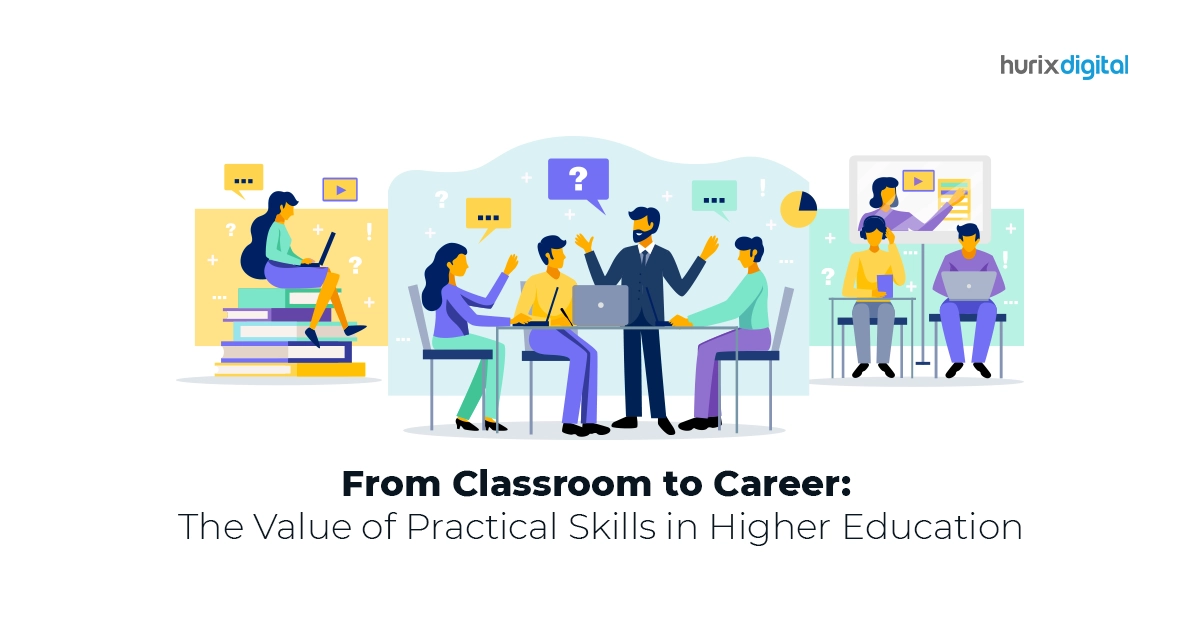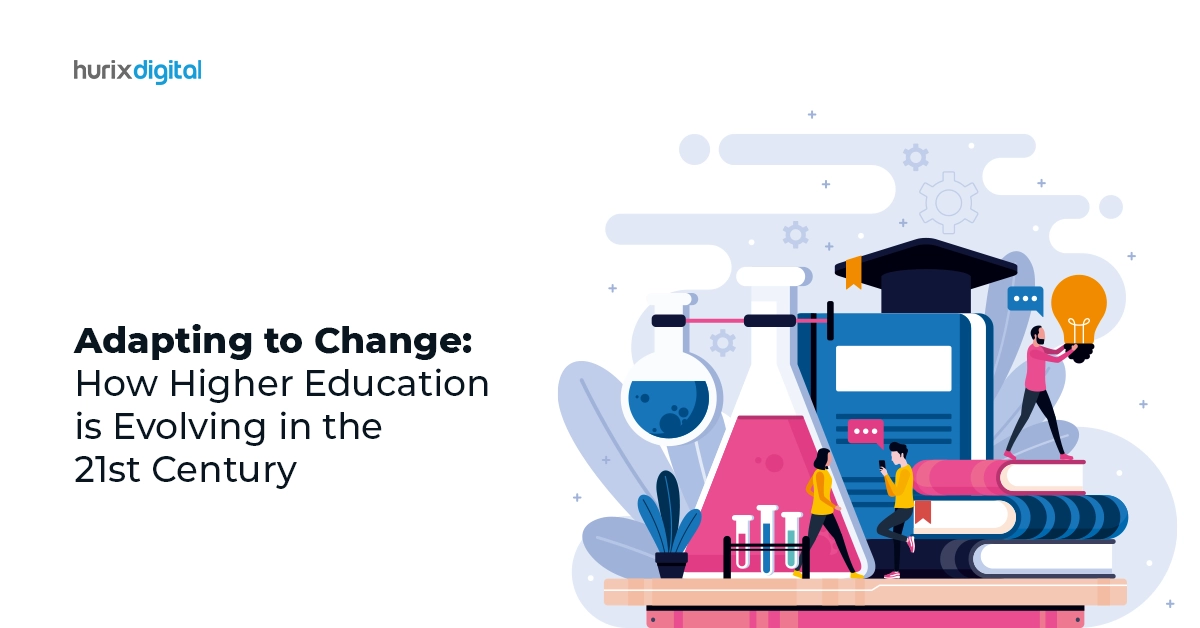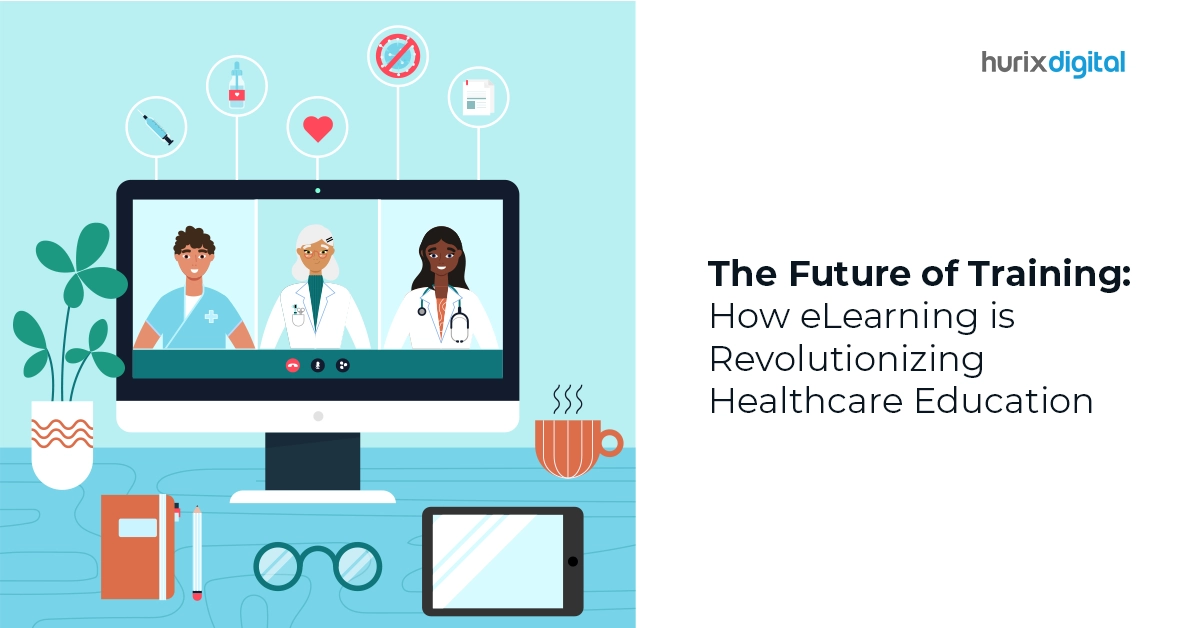With the massive rise in the number of internet users and the number of smartphones that are slated to double by 2023 (as per a McKinsey report), incorporating technology into the classroom is an inevitable progression of modern times. However, implementing personalized learning programs in higher education powered by a digital curriculum requires robust technology infrastructure for better user experience.
Introducing a digital curriculum in higher education can be a complicated process that requires time for faculty and educators to develop the necessary skills and competencies for its quality adoption.
A well-planned and carefully designed implementation strategy is critical to sustaining a successful and personalized digital curriculum-based learning program.
Table of Contents:
Why is creating a Digital Curriculum Strategy beneficial?
A well-designed strategy for personalized learning program powered by digital curriculum can-
- Help faculty and educational institutions create a clear vision for successful implementation
- Assist in getting systematic support from various community stakeholders
- Ensure that critical decisions impacting teaching and learning are clearly defined with academic goals in mind
- Establish a proper timeline for executing diverse learning program(s)
- Ensure that various factors are taken into consideration that require advance planning such as funding, staffing needs, technology requirements, and ongoing professional development
Here are 10 Reasons Why Institutions Should invest in Online Learning Programs
How do Students Benefit from a Digital Curriculum?
Digital curriculum is a sophisticated option with several connected technology elements aligned to grades which allow students to search for specific topics by the level of difficulty. It also provides teachers with a full course management system, including everything from custom lesson plans to automatic grading.
Let’s dive deep into some of the benefits of a digital curriculum that can help students in higher education.
- Can close achievement gaps
There is credible research data that validates the benefits of deploying technology to boost student achievement. If implemented properly, keeping the following components in mind– it can bring great results for students in higher education.
a)Teachers and technology must blend in a way that offers guidance to the student and what technology they are using.
b)The technology should be focused primarily on interactive learning, to engage students fully.
c)The technology should be used relatively so that it pushes the students to explore and create.
- Digital curriculum can be personalized
Digital curriculum is designed to be customized to each student’s specific needs, offering learning avenues that are most effective for them individually. This is the reason why this process proved to be a milestone for students in higher education, as it doesn’t just supplement a student’s education but can also help manage and drive it.
The faculty can use it to help individual students progress through a personalized lesson plan. Thus, helping each student reach their learning goals faster.
- Prepare students for the real world
With technology ruling our lives today, it is becoming imperative for students to embrace the change and better their chances at real-life success. Research also shows that more than 80% of middle-skill jobs today require digital skills, further stressing the importance of adopting educational technology and digital curriculum by education providers.
Related Article: Digital Solutions for Universities and Higher Education Institutions
How can Faculty Members Contribute Towards Digital Curriculum Development
Faculty across higher educational institutions can use the digital curriculum to revolutionize their classrooms and help their students learn better.
- Structuring the course well
First and foremost, faculty members need to design, structure and teach the online course well. To engage students more and achieve better outcomes, the course should mix chunks of videos, audio, discussions, and other hands-on exercises with text and possibly brief video lectures to make learning fast and fun.
- Curriculum mapping
One of the best practices in the development and implementation of a higher education curriculum is alignment because it requires a strong correlation between goals with assessment and objectives with instructional activities. Curriculum mapping is the procedure used to determine curriculum alignment that the faculty can use to transform the curriculum more efficiently.
Further, digital curriculum mapping can help faculty describe curriculum design so that it can be used to guide students towards further study, ensuring active learning in different contexts.
Related Article: Why Should Colleges and Universities Develop eLearning Programs?
How to Create a Digital Curriculum for Higher Education Students
Edtech innovations in the digital curriculum offer a practical solution for efficiently delivering individualized instructions. Here are some tips for creating a robust one for higher education students-
- Prioritize the infrastructure
A digital curriculum requires educational institutions to be fully equipped with the technology and the required infrastructure to deliver true digital content. This includes wireless broadcasting, adequate bandwidth, and necessary student and teacher personal technology.
- Leverage innovative builder tools available for the digital age
The process requires the use of various tools to support the inclusion of multimedia instructional content within courses, lessons, units, and activities. Some of these tools include-
Project
It is a tool that allows you to create interactive multimedia presentations with links, maps, videos, and online quizzes which are visually adapted to different devices.
TED-Ed
An excellent educational platform, TED-Ed lets you create educational lessons in collaboration with both teachers and students.
Animoto
With this friendly and practical tool, you can create high-quality videos from any mobile device in a short time to inspire students and help them improve academic lessons. Here’s More on How Mobile Learning is Changing the Educational Landscape
These tools can be extremely useful in helping you develop and implement lesson plans efficiently, along with monitoring student progress, instructional impact, and standards mastery.
- Integrate innovative assessment
The data from assessments should be given priority to make informed decisions regarding the next instructional offerings and also to carry out possible modifications of the curriculum itself.
- Allow collaboration
The process requires sustained professional development that allows the faculty to learn, collaborate, and plan outside of the traditional textbook environment. This includes active participation in webinars and other professional learning communities that can lead to professional development.
- Innovative solutions
The technology and learning solutions used should allow for differentiated instruction, backward teaching, as well as other instructional components and ongoing assessment to bring productivity to the classroom.
Related Article: 9 Reasons for the Growth of eLearning in Education
Bottom Line
Innovation has become the buzzword in the higher education industry in recent years. Educational institutions across the globe have been acknowledging the implications of delivery methods and technology used to support innovation in higher education.
Digital curriculum is one such innovative concept assisting institutions and faculties achieve better performance and higher growth for students.
However, the process of digital curriculum development should be approached in a way that maximizes student outcomes by meeting their diverse needs. For the successful delivery of digital curriculum, educational institutes need to follow a 4-stage implementation plan involving-
- Identifying goals and designing the instruction model
- Communicating the vision and gathering resources
- Exploring best practices
- Assessing success and charting a clear path to improve results further
While there is no doubt about the fact that introducing new technology in higher education does come with certain risk and expenses; if implemented well, it can bring great rewards in terms of learning outcomes, student engagement, and employability – all of which reflects exceptionally well on the educational institutions teaching them.
Related Read:
Why Should You Outsource Your Content Development
The Making of Future-proof Online Learning Programs and Courses











